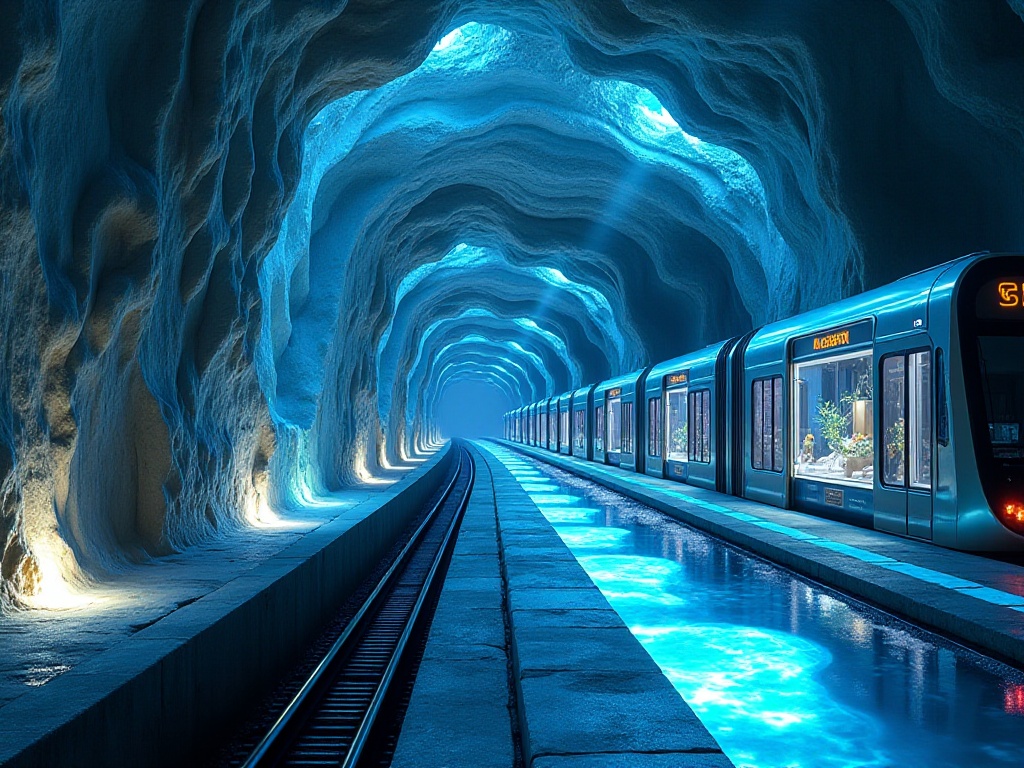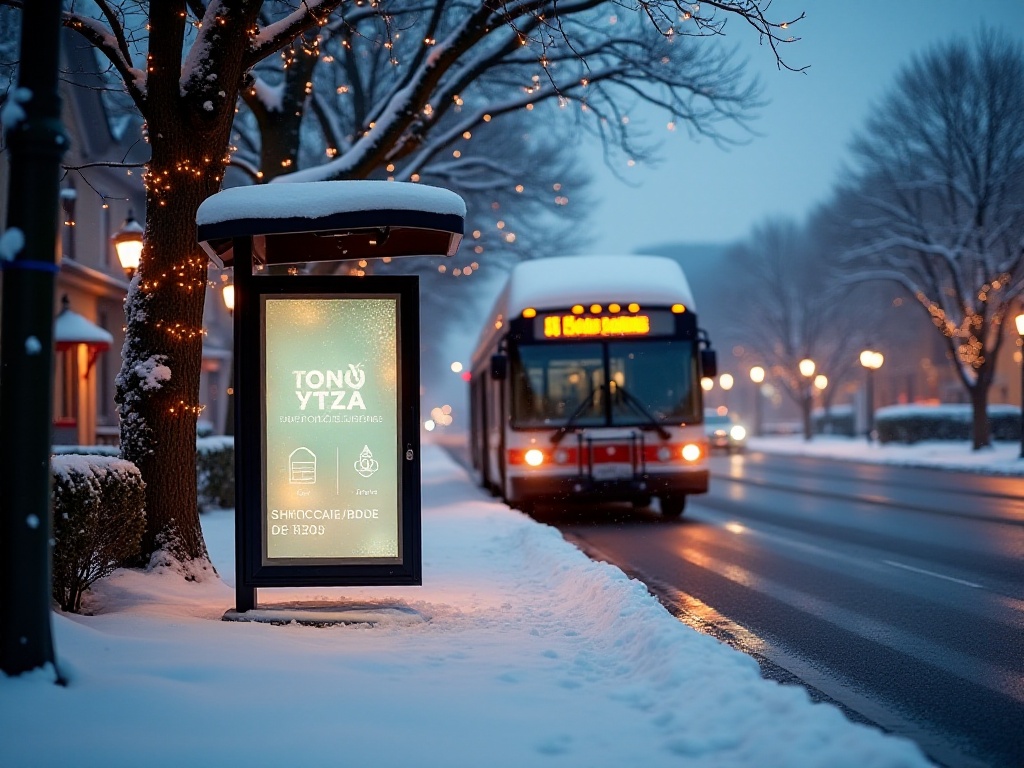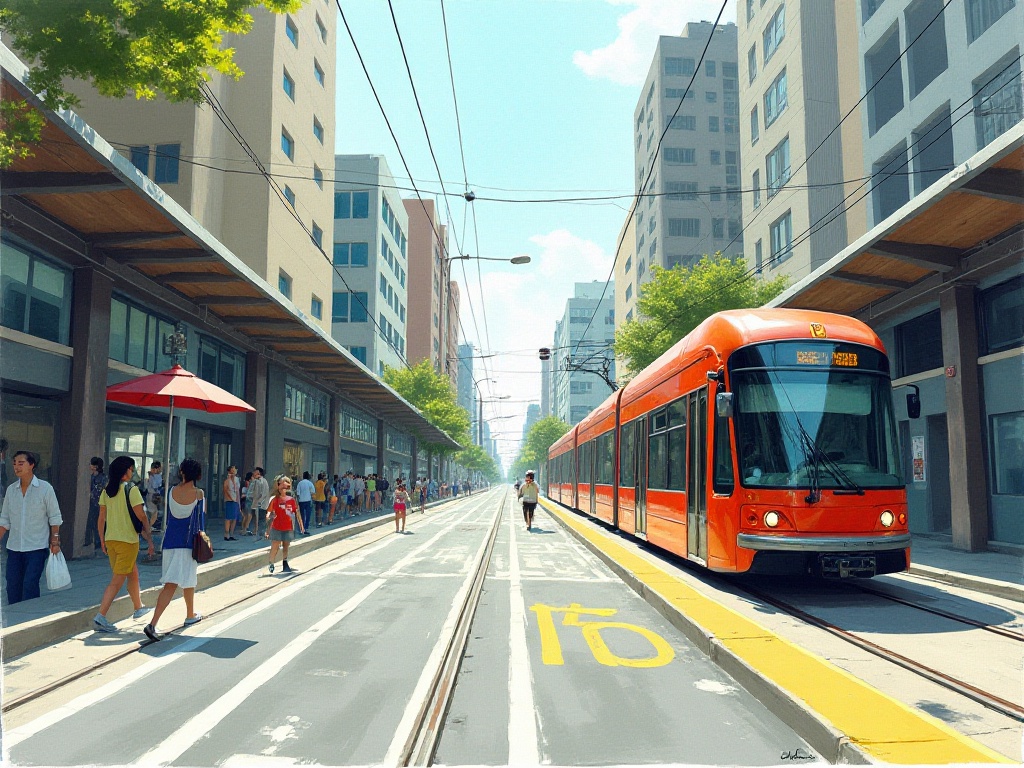First Encounter with New York
The hustle and bustle of New York's JFK Airport hit me as soon as I got off the plane. As an international airport serving over 60 million passengers annually, the foot traffic here is overwhelming. Different languages echo throughout the airport, travelers with large and small suitcases crowd around baggage carousels, and the stern faces of customs officials amid the rapidly moving crowds all showcase the city's international character.
On my first visit to New York, just figuring out how to get from the airport to Manhattan gave me a headache. I had to weigh the price, time, and comfort levels of various transportation options. After careful comparison, I ultimately chose the AirTrain-to-subway combination. This journey introduced me to the unique charm of America's public transit system.
The signage from the terminal to the AirTrain platform was very clear, with blue signs visible throughout the airport. The AirTrain experience was quite pleasant, with spacious, bright carriages offering views of Queens through the windows. While the platform was somewhat crowded when transferring to the subway at Jamaica Station, the entire transfer process was very smooth. Staff members actively helped passengers with large luggage through the turnstiles, and this thoughtful service left a deep impression on me.
In contrast, while taking a taxi is convenient, the price is truly daunting. A taxi ride from the airport to Manhattan starts at around $50, and with traffic delays and tips, it can easily exceed $70. The AirTrain plus subway combination only costs $8, and although it might take an extra 20-30 minutes, the value for money is quite appealing.
Thoughts on the Subway
The New York subway is the city's lifeline, not just a transportation system but a stage showcasing the city's culture and history. Behind the numbers - 472 stations and 28 lines - lies the daily life of countless New Yorkers. Each station has its own unique story, and each line carries different urban memories.
The art installations in subway stations particularly impressed me. At Union Square-14th Street, huge stained glass artworks refract sunlight into brilliant patterns; at Atlantic Avenue in Brooklyn, modern steel structures contrast sharply with century-old brick walls. These artworks not only beautify the platform environment but also provide artistic solace to hurried passengers.
New York's subway letter and number line identification system has an interesting historical origin. In 1932, to integrate subway lines then operated by different private companies, New York City adopted this straightforward identification system. Numbered lines mainly belong to the IRT (Interborough Rapid Transit) system, while lettered lines belong to the BMT (Brooklyn-Manhattan Transit) and IND (Independent Subway System). Behind this seemingly arbitrary numbering lies the historical trajectory of New York subway development.
The flat-fare system is also interesting. $2.90 can take you from the Bronx all the way to Coney Island, which is arguably the best deal in high-priced New York. I once used a single subway ticket to ride from Brighton Beach in Brooklyn all the way to Upper Manhattan, passing the Brooklyn Bridge, Times Square, and Central Park, essentially linking the entire city in one journey.
The MetroCard reload system is intriguing too. When you add $5.50 or more to your card, the system automatically gives you a 5% bonus. While this seems like a small benefit, it adds up to significant savings for daily commuters over a year. However, it's worth noting that MetroCards expire after a certain period, so you shouldn't load too much at once.
The New York subway's 24/7 operation is quite rare worldwide. While service frequency decreases late at night, the ability to catch a subway home at any time provides invaluable peace of mind for residents of this sleepless city. I once rode the subway at 3 AM, and although the car wasn't crowded, I could still feel the city's pulse.
Bus Experience
The Greyhound bus journey from New York to Boston completely transformed my impression of long-distance bus travel. Modern fleet, professional drivers, and comprehensive service facilities made this 4.5-hour journey relaxing and enjoyable.
Before boarding, I arrived at the Port Authority Bus Terminal in New York half an hour early. This bus terminal, built in the 1950s, may look dated but has all necessary facilities. The waiting area is spacious and bright, with electronic displays showing real-time departure information for all routes, eliminating any worry about missing your bus.
The Greyhound bus seats were surprisingly comfortable. The wide leather seats recline, and leg room is generous. Each seat comes equipped with USB charging ports and power outlets, making long-distance travel more convenient. While the free WiFi isn't particularly fast, it's adequate for social media browsing and checking emails.
The scenery along the way is beautiful. The bus travels on Interstate 95, passing through Connecticut and Rhode Island, with continuous forests and occasional bays. In autumn especially, the maple trees don their red coats, creating a stunning roadside landscape.
On the bus, I met a Boston University professor who commutes weekly between New York and Boston and has become a Greyhound regular. Through our conversation, I learned that over 15 million passenger trips are made annually on Greyhound buses between East Coast cities. This number is astonishing, considering that in China, intercity travel primarily relies on high-speed rail and air travel.
The professor explained that Greyhound's popularity stems partly from affordable fares - just $20-30 with advance booking - and partly because bus stations are usually centrally located, making them more convenient than airports. Moreover, bus companies have continuously improved their service quality in recent years, adding user-friendly features like luggage tracking systems and mobile e-tickets.
Impressions of Boston
Arriving at Boston South Station in the afternoon, my first impression was one of steadiness and elegance, quite different from New York's bustle. The historic train station building itself is a work of art, with its tall vaulted ceiling and classical architectural style transporting visitors back to 19th century New England.
While Boston's public transportation system may not match New York's scale, it has its own unique charm. The subway system, affectionately called the "T" by locals, is America's oldest, with nearly 120 years of history. Riding the Green Line through downtown Boston creates an interesting contrast between ancient tunnels and modern carriages.
I was particularly fascinated by Boston's water transportation. The Charles River ferries aren't just a means of transport but an excellent way to appreciate the city's scenery. During morning and evening rush hours, many commuters choose water buses to travel between Boston proper and Charlestown. I deliberately chose a clear morning to experience the ferry, sitting on deck watching the city skyline gradually sharpen in the morning light while seagulls circled the boat in Boston Harbor - an experience definitely worth waking up early for.
Boston's bike-sharing system is also well-developed. Blue Bluebikes are found throughout the city, especially around Cambridge and Harvard University where cyclists are everywhere. I rented a Bluebike and rode along the Charles River, where the well-planned bike paths allow you to enjoy the scenery without worrying about conflicts with motor vehicles.
Regarding the bus system, Boston's Silver Line is a distinctive bus rapid transit system. It uses dedicated lanes and tunnels, combining the advantages of subway and bus transit. The SL1 line from the airport to downtown is a good example, not only completely avoiding surface traffic congestion but also offering free service.
Experience Summary
This East Coast trip gave me a deeper understanding of public transportation. Both New York and Boston strive to create diverse, inclusive transportation systems. From accessibility facilities to discounted fare policies, from multilingual services to 24-hour operations, these details reflect the social value of public transportation.
Half-price discount policies for seniors, students, and disabled persons demonstrate social care while encouraging more people to use public transit. In Boston, I saw an elderly person in a wheelchair independently riding the subway, with platform staff and other passengers naturally offering assistance - a common scene in American public transit systems.
The transportation systems of both cities have their own characteristics. New York pursues efficiency, with its vast network and high-frequency service supporting this never-sleeping city; Boston emphasizes balance, weighing history with modernity, efficiency with environmental protection. But they both work toward the same goal: providing safe, convenient, and affordable transportation for all citizens.
Reflecting on the entire journey, I deeply feel that a city's transportation system is not just a collection of steel and rails, but a carrier of urban spirit. It connects people with people, communities with communities, shaping the city's rhythm and lifestyle. In this rapidly developing era, finding balance between efficiency and humanization, and making public transportation better serve everyone, are questions worth deep consideration by every city.
Each city has its own characteristics and needs, and there's no one-size-fits-all solution. But one thing is certain: a good public transportation system should be inclusive, sustainable, and people-oriented. It must not only meet basic transportation needs but also consider deeper issues like environmental impact and social equity.
What do you think a city's transportation system should be like? Should it pursue efficiency and speed, or focus more on universal accessibility and sharing? Feel free to share your thoughts in the comments.




